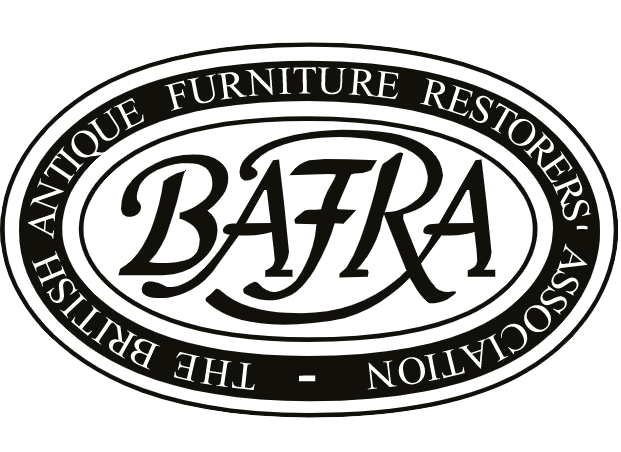
Antique Tortoiseshell Restoration & Repair by BAFRA Restorers
At BAFRA, we provide access to antique tortoiseshell restoration and repair. Every member has been rigorously assessed and vetted. Our members are all established businesses that are fully accredited and work to the highest standards and ethics.
Antique Tortoiseshell Restorers at BAFRA
Antique tortoiseshell restoration is the process of repairing and preserving objects made from tortoiseshell, a material historically derived from the shells of certain turtles, often used in decorative items like jewellery boxes, combs, inlays, and furniture. Over time, tortoiseshell can become brittle, warped, cracked, or discoloured due to environmental factors like humidity, temperature changes, and ageing.
Restoration involves careful cleaning, stabilising damaged or warped sections, and repairing cracks or missing pieces using conservation-grade materials. BAFRA skilled restorers may use colour-matched resin or other substitutes to replicate the appearance of missing sections while ensuring no harm to the remaining original material. Preservation techniques often include applying protective coatings to maintain the tortoiseshell's lustre and prevent further degradation.
Because of its natural composition and delicate nature, tortoiseshell requires expert handling to ensure its historical, aesthetic, and functional qualities are retained. Additionally, due to legal restrictions surrounding tortoiseshell, our restorers must adhere to strict conservation guidelines to ethically restore antique pieces. This process ensures the longevity and value of these historically significant items while respecting their cultural and environmental importance.
Antique Tortoiseshell Restoration FAQs
What is antique tortoiseshell used for?
Antique tortoiseshell was commonly used in decorative items such as jewellery boxes, combs, inlays, tea caddies, and instrument veneers due to its unique pattern and lustre. Prized for its beauty and workability, it was often combined with other materials like ivory or brass to create intricate designs. Today, it holds significant historical value, making restoration essential for preserving its aesthetic and cultural importance, especially since its use is now strictly regulated.
What are common issues with antique tortoiseshell?
Antique tortoiseshell often suffers from cracking, warping, discolouration, and surface dullness due to ageing and environmental factors like humidity and temperature fluctuations. These items can also develop separations in veneers or lose small decorative elements. Over time, the material becomes fragile, making it susceptible to further damage if not properly cared for or restored. Addressing these issues requires expertise to preserve the item’s beauty and structural integrity.
How are cracks or missing sections repaired in tortoiseshell?
Cracks or missing sections in antique tortoiseshell are repaired using conservation-grade materials, such as colour-matched resins or substitutes that mimic the original appearance. Cracks are stabilised with adhesives to prevent further splitting, while missing areas are filled and shaped to seamlessly blend with the surrounding material. This careful process ensures the piece’s structural and visual integrity is preserved.
How is discolouration or dullness addressed during restoration?
Discolouration or dullness in tortoiseshell is addressed through gentle cleaning and polishing techniques. Surface dirt and oxidation are removed using non-abrasive methods, and the material is carefully buffed to restore its natural sheen. A protective coating may be applied to enhance lustre and shield the surface from future damage. These steps revive the tortoiseshell’s vibrant patterns and deep translucence, essential to its visual appeal.
Is antique tortoiseshell restoration ethical and legal?
Yes, antique tortoiseshell restoration is ethical and legal when it adheres to strict conservation guidelines. Since tortoiseshell is now protected under international laws, restorers must use non-invasive, reversible techniques and avoid sourcing new material. Restoration focuses on preserving the existing tortoiseshell while respecting its historical and environmental significance, ensuring compliance with regulations and ethical standards for cultural heritage conservation.
Why choose a BAFRA-accredited member to restore antique tortoiseshell?
Antique tortoiseshell is delicate and requires expert knowledge to restore effectively. BAFRA professionals use specialised tools and techniques to stabilise damage, clean, and repair items while preserving their value. They also understand legal restrictions and use ethical methods to ensure compliance. Choosing a BAFRA skilled restorer guarantees high-quality, minimally invasive restoration that protects your item’s integrity and enhances its longevity for future appreciation.
Find BAFRA Accredited Antique Tortoiseshell Restoration & Repair Specialists
All accredited, full members are required to have at least five years as a conservation-restoration professional (the average member today has 23 years of experience) and pass an exacting assessment on their skills, knowledge and business credentials. Our members acknowledge the importance of continuous professional development to keep abreast of advances in knowledge, skills and technical developments in antique tortoiseshell furniture restoration and repair.
Find BAFRA-accredited antique tortoiseshell furniture restoration specialists near you by clicking the button below and entering your postcode.

